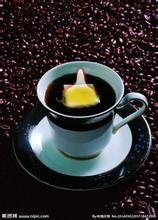Description of the different Flavor of Yejia Coffee and Candle Coffee introduction to the taste of grinding scale varieties
The difference between Yerga Sherfi and Candle Mans Coffee Flavor Description Grind Scale Variety Region Taste Introduction
After obtaining the green coffee beans, sometimes in order to pursue the perfect taste, there is a final screening, so this sun-cured sidamole can reach the highest grade of G1.
1. Only fully ripe dark red coffee cherries are picked at the time of picking. Before being exposed to sunlight, the beans are screened for defects at the processing plant to make the beans look more average in size and maturity.
2. Then, use a raised wooden frame or whole trellis for sunning, which will avoid the risk of the beans getting contaminated by the smell on the ground. During the exposure process, the beans should be carefully cared for so that the coffee beans can be evenly exposed to moisture; every three to five days, coffee workers will manually screen out the defective moldy beans. So by the time the sun is done and the beans come into the field without the skin and flesh, a piece of sunburned, bright red coffee cherry is already at a very low blemish level
Operation Cherry Red is a small-scale farm quality improvement project led by Dutch trading company Trabocca BV and partly funded by the Dutch government since 2005. The project to enhance coffee production and quality in remote areas of Ethiopia by providing producer expertise and technical assistance began in 2005 with a selection of small coffee cooperatives located at high altitudes in the present-day Sidamo, Yegashev and Lim regions. Encourage and assist producers to improve washing, semi-washing, solarization or other experimental treatments as much as possible to improve the quality of coffee, and ensure the quality of each batch through testing (professional cup testers are also stationed in coffee producing areas to grasp the coffee flavor most directly). Before the harvest season, Trabocca invites selected smallholder producers/organizations to participate in the production of micro-batches of coffee (about 1500 to 3000 kg), carefully selected by hand at 100% maturity (hence the name Red Cherry Project).
Yega Shefi, nearly two kilometers above sea level, is one of the highest coffee-producing areas in the world. Yirga means "settle down", Cheffe means "wetland", and Lake Turkana, Lake Abaya and Lake Chamo bring abundant water vapor here. In the rift valley represented by Misty Valley, fog permeates all year round, spring is like all the year round, the breeze is gentle, cool and humid, thousands of coffee trees thrive and multiply, giving birth to the unique fragrance of flowers and fruits of Yejia Xuefei, which is ambiguous and unpredictable.
European monasteries pioneered local coffee farming, which was later run by coffee communities or cooperatives in the villages surrounding the town. There are no special plantations here, coffee trees naturally scattered in the forest and pastoral. During harvest season, Ethiopian Coffee Trading Company will go to town to buy coffee beans collected by farmers, and finally auction them for export under the brand name "Yegashefi".

Important Notice :
前街咖啡 FrontStreet Coffee has moved to new addredd:
FrontStreet Coffee Address: 315,Donghua East Road,GuangZhou
Tel:020 38364473
- Prev

Introduction to the story treatment method of grinding scale variety producing area for the flavor characteristics of Yunnan sunny coffee beans
Yunnan sun coffee beans flavor description grinding scale variety production area treatment method introduces a lot of broken beans, adzuki beans, bad beans, after the size of the sun, there are still a lot of defective beans, so we hand-picked on the spot, and finally picked out 9 kilograms of qualified ones, and most of the morning has passed, of course, if it is used to make instant coffee or general commercial beans, high-yield catimor
- Next

Introduction of varieties of coffee beans produced in Tanzania by flavor description and taste treatment
The characteristics of Tanzanian coffee beans: flavor description and taste treatment varieties the famous coffee brands in Tanzania are Africafe, Tanica Cafe and Kilimanjaro. Tanzanian coffee has long been loved by Europeans and has joined the ranks of famous products. A nickname given by the Europeans to a coffee gentleman in Tanzania. Africafe coffee, AA coffee from Tanzania
Related
- Detailed explanation of Jadeite planting Land in Panamanian Jadeite Manor introduction to the grading system of Jadeite competitive bidding, Red bid, Green bid and Rose Summer
- Story of Coffee planting in Brenka region of Costa Rica Stonehenge Manor anaerobic heavy honey treatment of flavor mouth
- What's on the barrel of Blue Mountain Coffee beans?
- Can American coffee also pull flowers? How to use hot American style to pull out a good-looking pattern?
- Can you make a cold extract with coffee beans? What is the right proportion for cold-extracted coffee formula?
- Indonesian PWN Gold Mandrine Coffee Origin Features Flavor How to Chong? Mandolin coffee is American.
- A brief introduction to the flavor characteristics of Brazilian yellow bourbon coffee beans
- What is the effect of different water quality on the flavor of cold-extracted coffee? What kind of water is best for brewing coffee?
- Why do you think of Rose Summer whenever you mention Panamanian coffee?
- Introduction to the characteristics of authentic blue mountain coffee bean producing areas? What is the CIB Coffee Authority in Jamaica?

